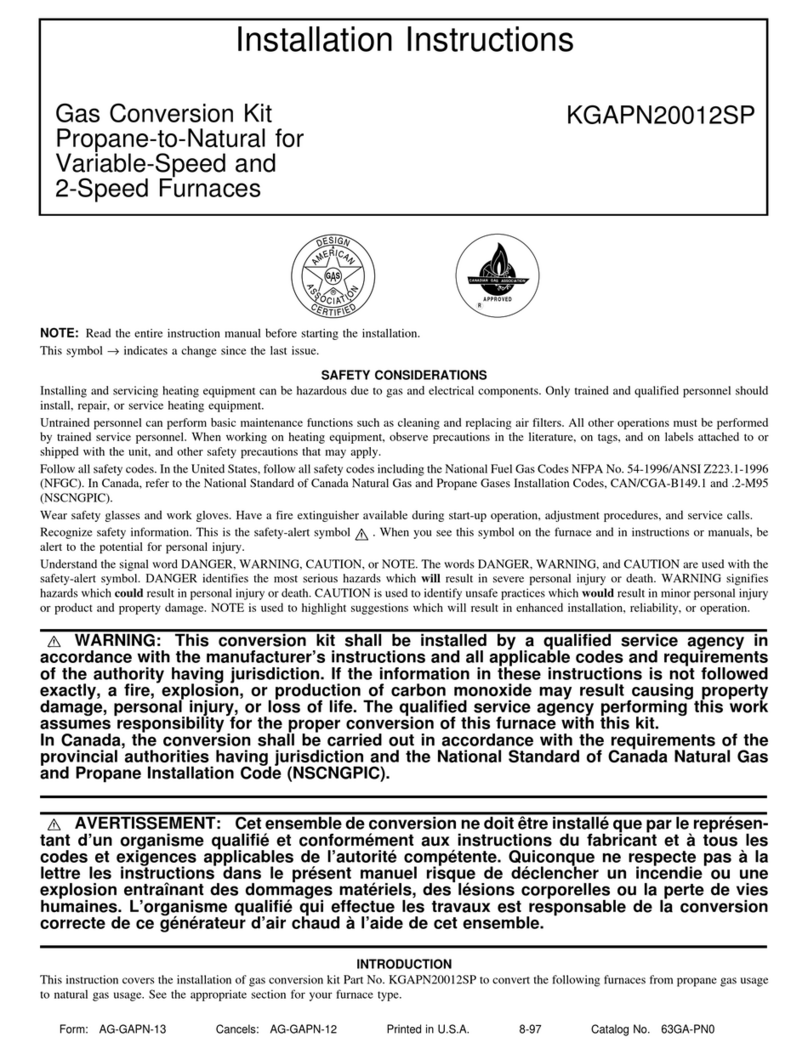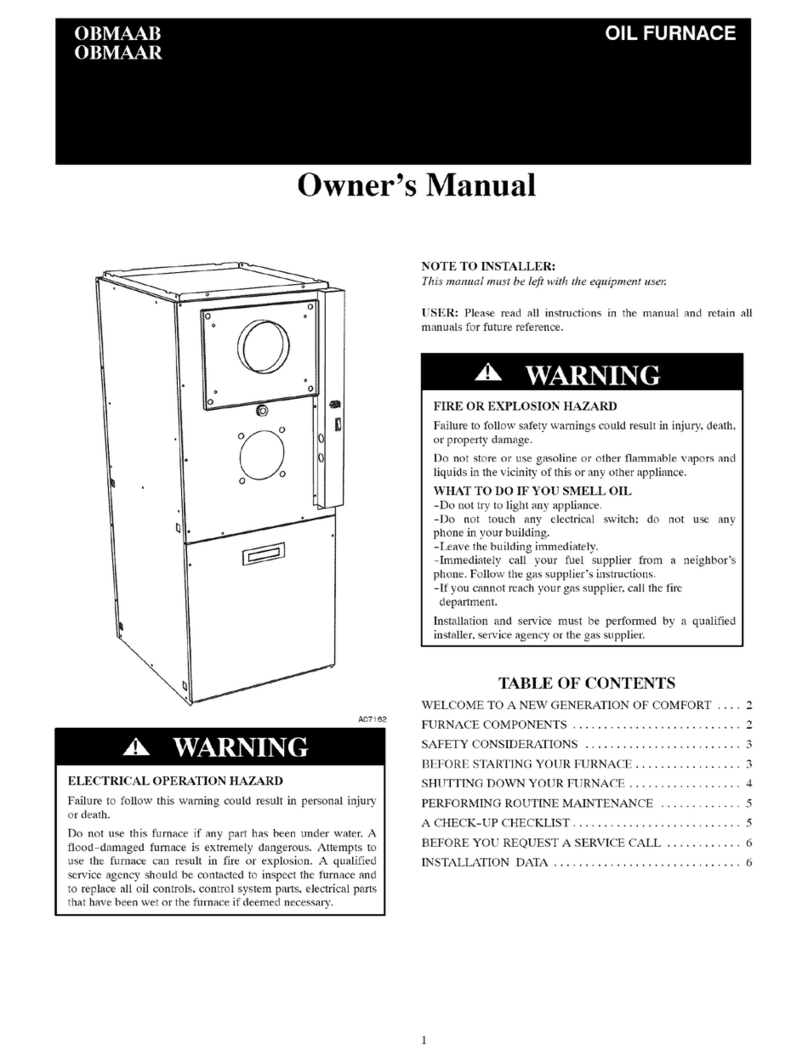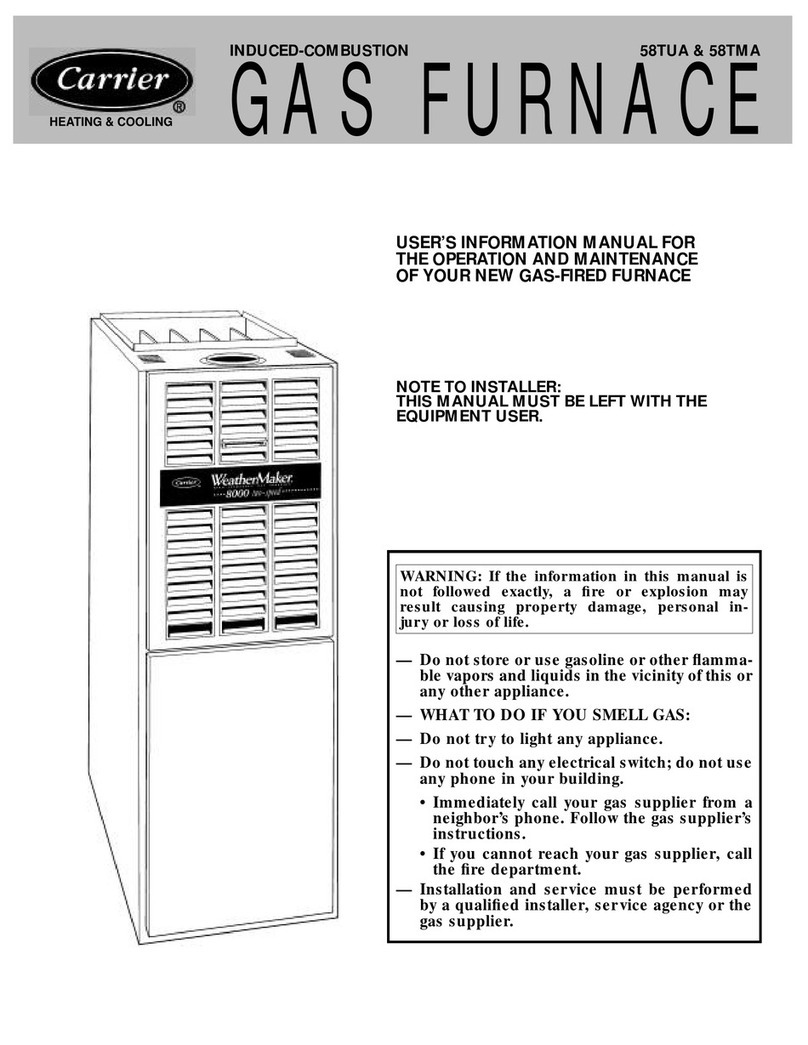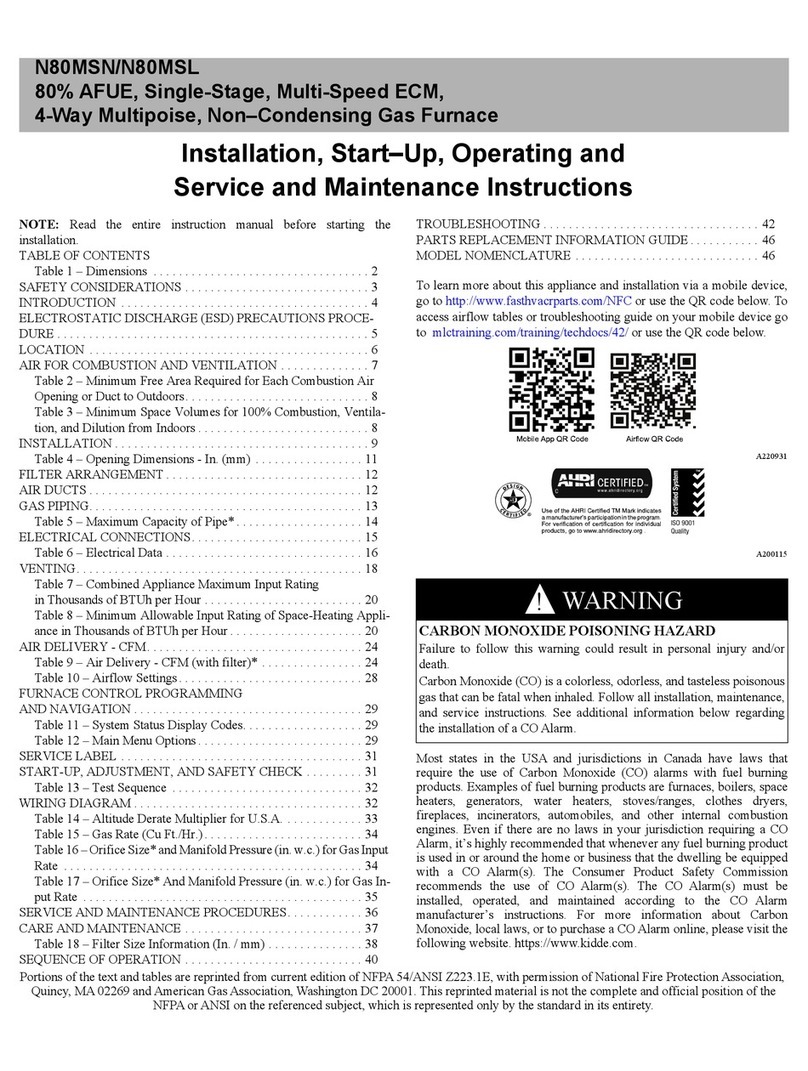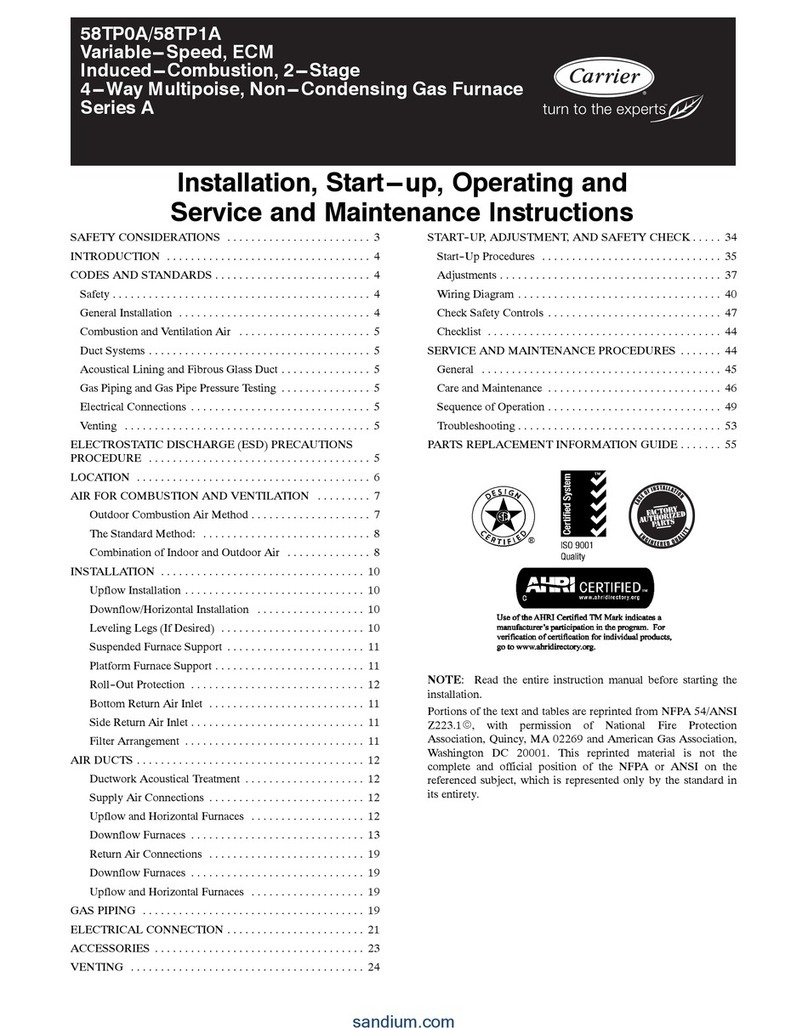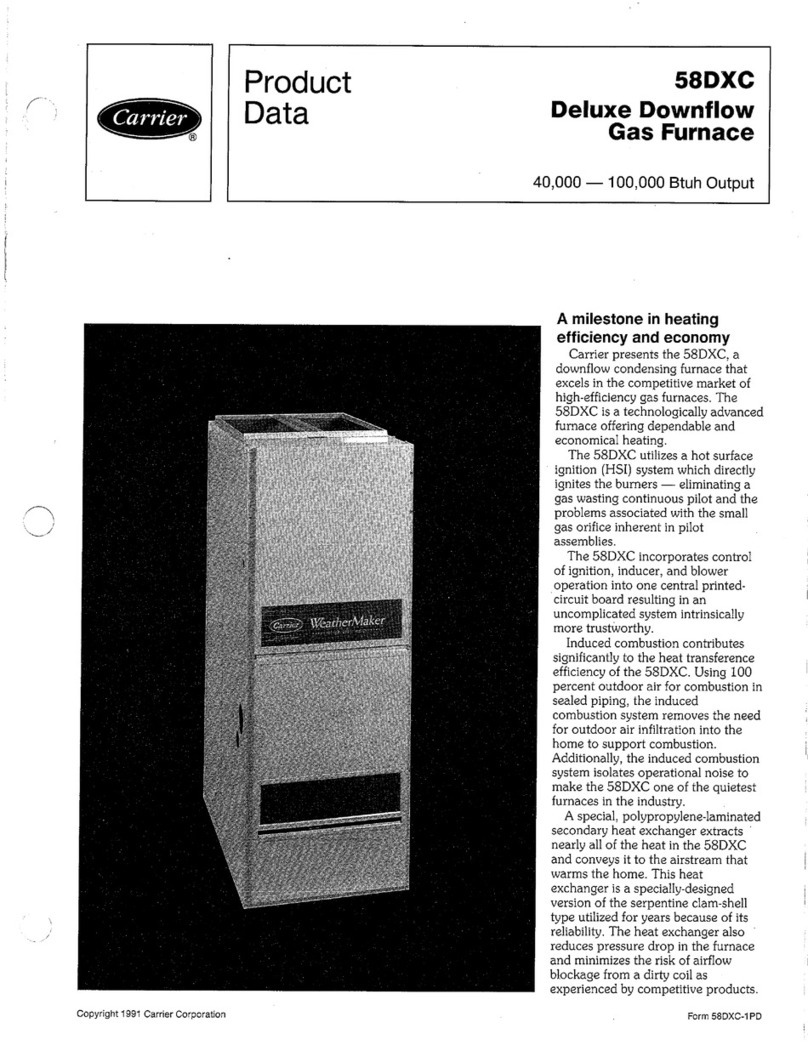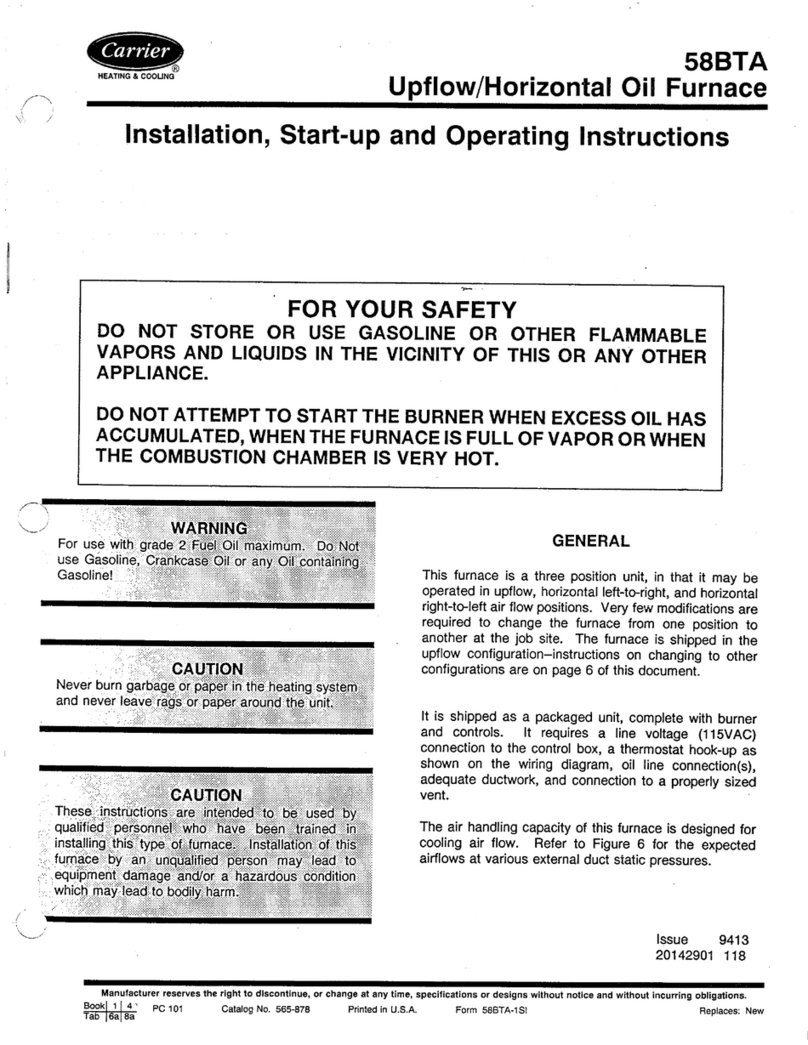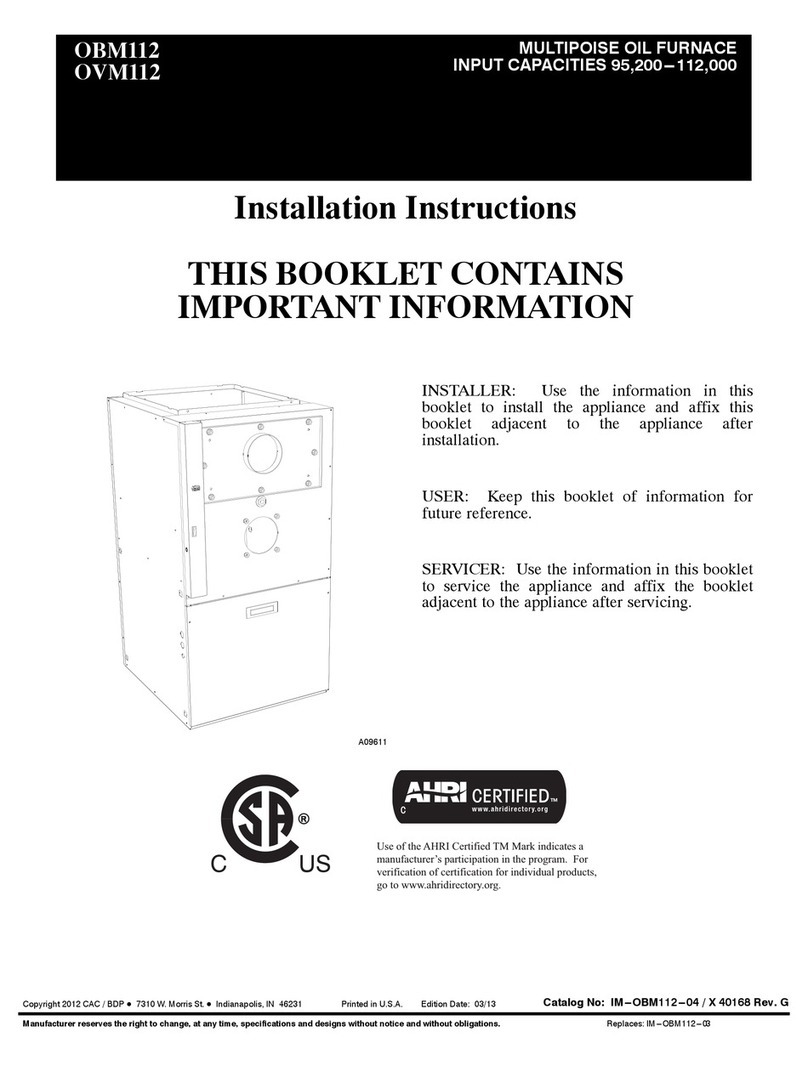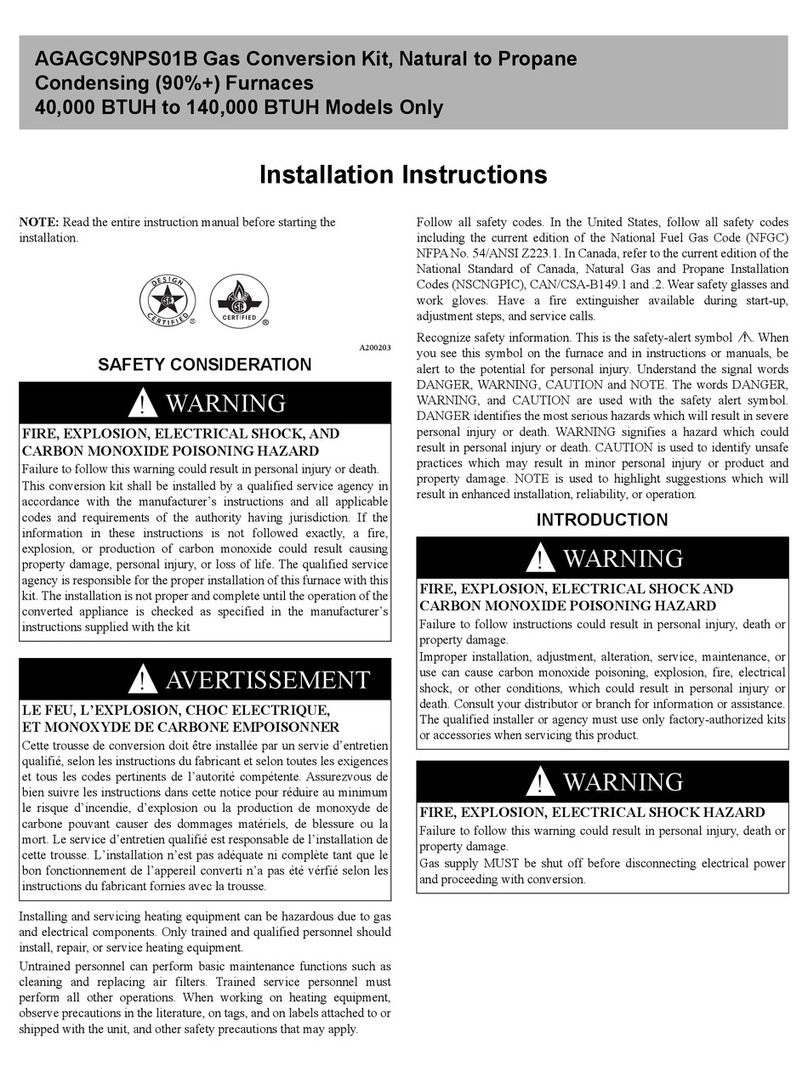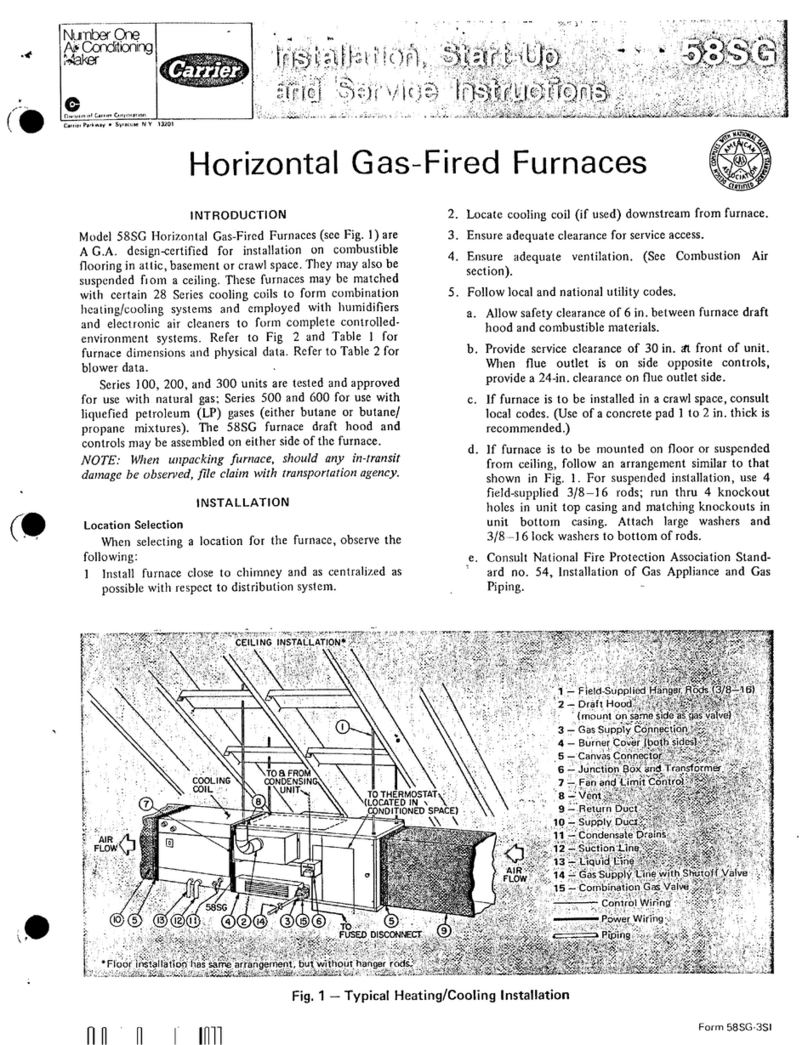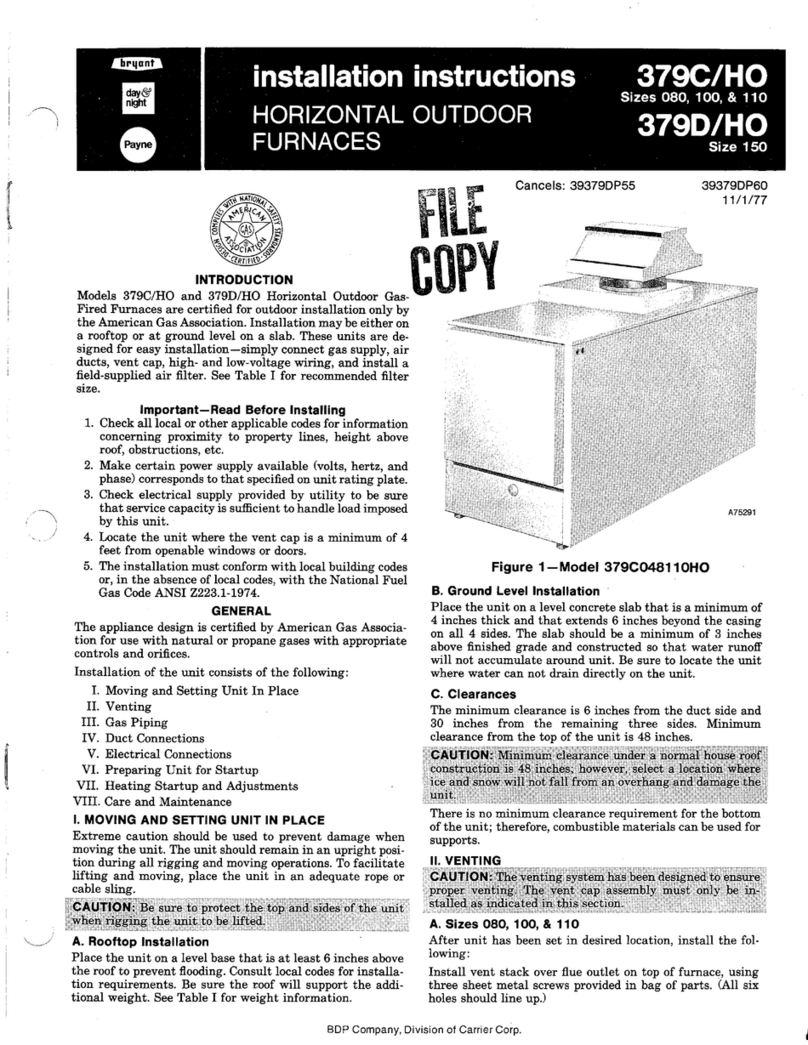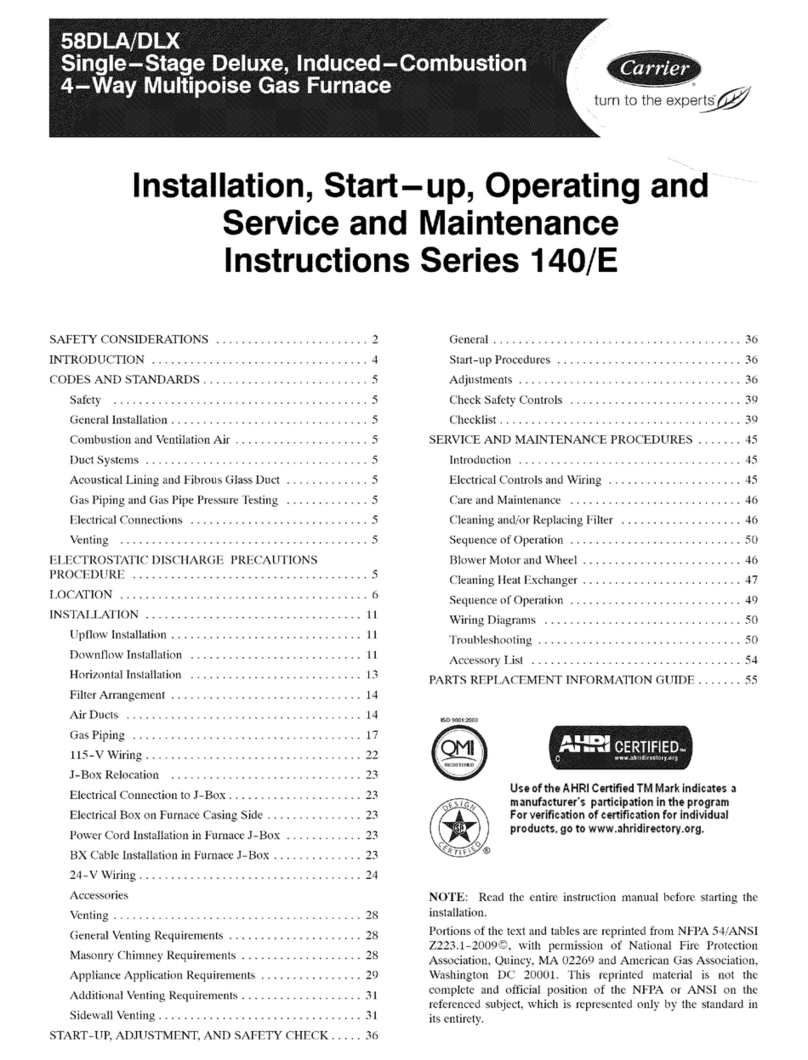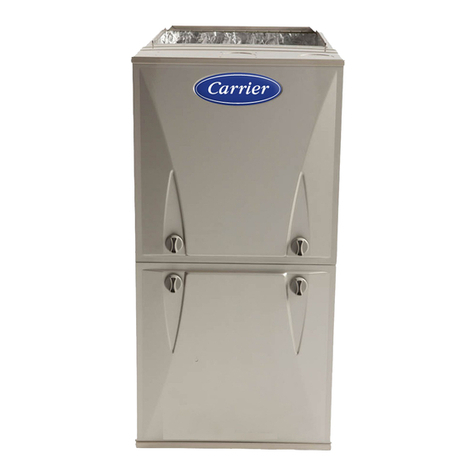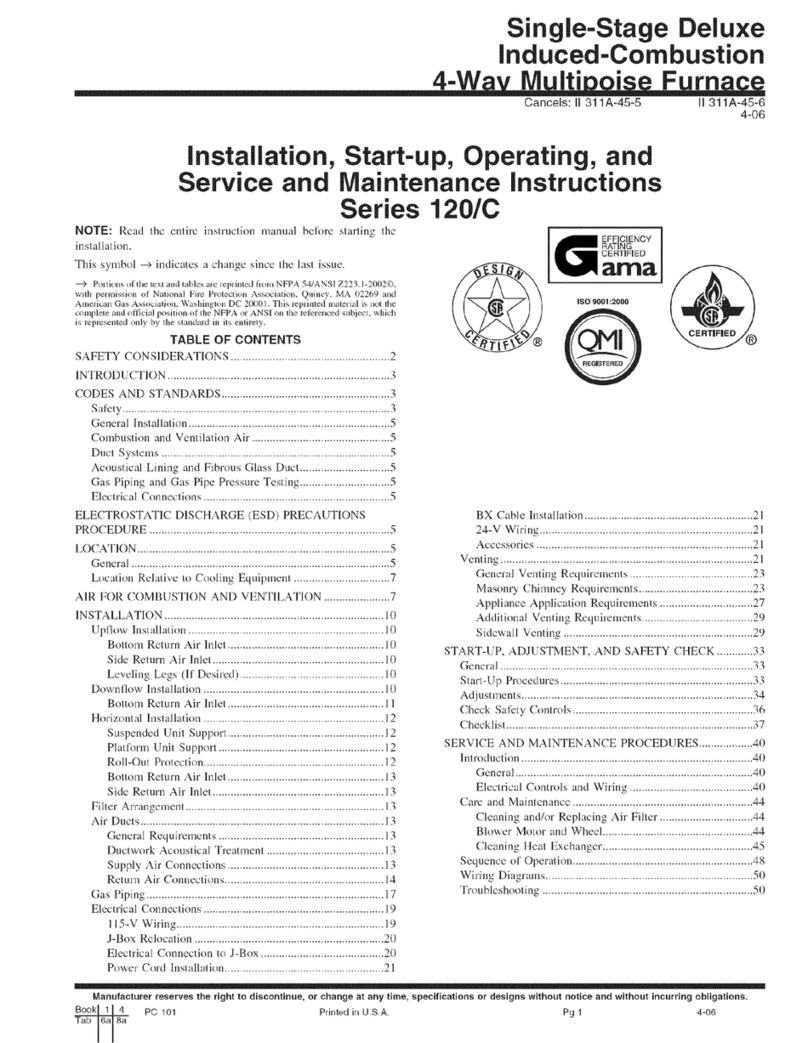
INTRODUCTION
The OBMAA furnace is capable of 3 heat/airflow combinations
by a simple nozzle change. Inputs of 70.000, 84000, and 98,000
BTUH are possible.
This furnace is a multipoise unit. It may be installed in the upflow,
downflow, or horizontal configuration.
PERSONAL INJURY AND UNIT DAMAGE HAZARD
Failure to follow this caution may result in personal injury,
equipment damage or improper operation.
This oil furnace may be used for construction heat provided
that:
-The furnace is permanently installed with all electrical
wiring, piping, venting and ducting installed according to
these installation instructions. A return air duct is provided,
sealed to the furnace casing, and terminated outside the space
containing the furnace. This prevents a negative pressure
condition as created by the circulating air blower, causing a
flame roll-out and/or drawing combustion products into the
structure.
-The furnace is controlled by a thermostat. It may not be "hot
wired" to provide heat continuously to the structure without
thermostatic control.
-Clean outside air is provided for combustion. This is to
minimize the corrosive effects of adhesives, sealers and other
construction materials. It also prevents the entrainment of
drywall dust into combustion air, which can cause fouling and
plugging of furnace components.
-The temperature of the return air to the furnace is maintained
between 60"F (15°C) and 80°F (27°C) with no evening
setback or shutdown. The use of the furnace while the
structure is under construction is deemed to be intermittent
operation per our installation instructions.
-The air temperature rise is within the rated rise range on the
furnace rating plate, and the firing rate has been set to the
nameplate value.
-The filters used to clean the circulating air during the
construction process must be either changed or thoroughly
cleaned prior to occupancy.
-The furnace, ductwork and filters are cleaned, as necessary, to
remove drywall dust and construction debris from all HVAC
system components after construction is completed.
-After construction is complete, verify furnace operating
conditions including ignition, input rate, temperature rise, and
venting, according to the manufacturer's instructions.
The furnace is shipped in the upflow configuration and instructions
on how to change to other positions are included in this manual. It
requires a line voltage (115 vac) connection to control box, a
thermostat hook-up as shown on wiring diagram, oil line
connection(s), adequate duct work, and connection to a properly
sized vent.
LOCATION
General
This furnace is approved for reduced clearances to combustible
construction, therefore, it may be installed in a closet or similar
enclosure. Since this unit may be installed in an upflow,
counterflow, or horizontal position, it may be located in a basement
or on the same level as area to be heated. In any case, unit should
always be installed level and must not slope toward the front.
ELECTRICAL SHOCK OR UNIT DAMAGE HAZARD
Failure to follow this warning could result in personal injury,
death and/or property damage.
This furnace is not watertight and is not designed for outdoor
installation. This furnace shall be installed in such a manner as
to protect electrical components from water. Outdoor
installation would lead to a hazardous electrical condition and
to premature furnace damage.
FIRE, EXPLOSION HAZARD
Failure to follow this warning could result in personal injury,
death and/or property damage.
For attic installation, it is important to keep insulation 12 in.
(304.8 ram) or more away from any furnace openings. Some
types of insulating materials may be combustibles.
In a basement, or when installed on floor (as in a crawlspace), it is
recommended that unit be installed on a concrete pad that is 1 - 2
in. (25.4 - 50.8 mm)thick.
The furnace should be located as close as possible to chimney or
vent in order to keep vent connections short and direct. The
furnace should also be located as near as possible to center of air
distribution system.CONFIGURATIONS
Upflow Installation
The return air opening may be located on either side of the furnace.
Care should be taken not to damage the wires inside while cutting
the opening. Install the filter rack supplied with the unit according
to the instructions provided with it. It is also recommended to
install the blower door before handling or moving the unit. In
cases where the return air enters through the base of the furnace,
the floor return base (KLADC0301098) must be used.
t t t
WARM AIR
AIR CHAUD
©
Filter rack 20" x 20" ]
508mm x 508mm 1
AIR RETURN
RETOUR D'A_R
floorC°mbustible ]
A07643
Fig. 4- Upflow Configuration
Downflow Installation
When the furnace is installed in the downflow position on a
combustible floor, the clearances from combustibles must be
adhered to. The downflow base KLASB0701098 can be used to
ensure these clearances. Refer to Fig. 5 and the installation
instructions provided with the base.
In cases where the return air enters through the furnace bottom
inlet, the floor return base KLADC0301098 must be used.



